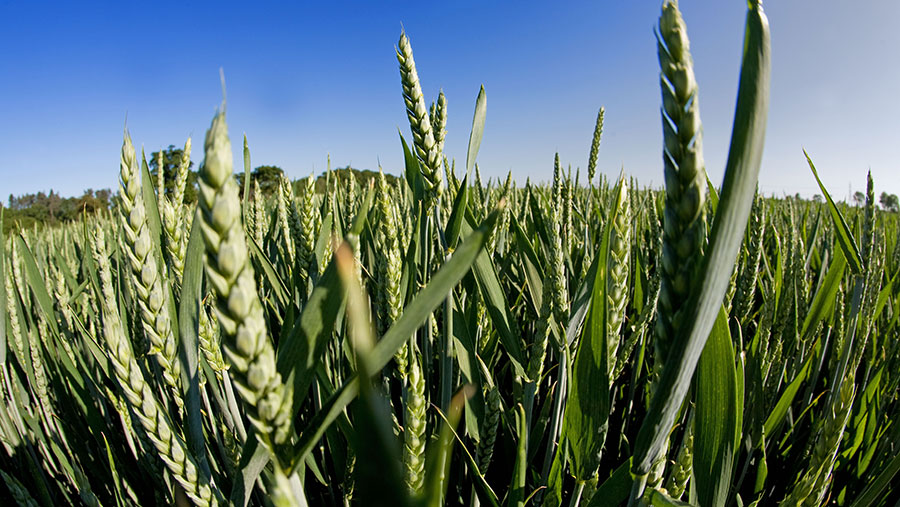Crop gene research opens new avenue to aid food security
 © Tim Scrivener
© Tim Scrivener Grass crops are able to borrow genes from their neighbours which allows them to grow faster, bigger and stronger, new research shows.
A study, led by the University of Sheffield, is the first to identify that grasses can incorporate DNA from other species into their genomes through a process known as lateral gene transfer.
See also: Advice on keeping wheat green to maximise yields
The findings could inform future work to create crops that are more resistant to the effects of climate change and help to tackle food security problems.
The Sheffield team found that the process is widespread across the crops studied, including wheat, maize, rice and barley.
‘Evolutionary shortcut’
Luke Dunning, senior author of the research from the Department of Animal and Plant Sciences, said: “Grasses are taking an evolutionary shortcut by borrowing genes from their neighbours.
“By using genetic detective work to trace the origin of each gene, we found over 100 examples where the gene had a significantly different history to the species it was found in.
“The findings may make us, as a society, reconsider how we view GM technology, as grasses have naturally exploited a very similar process.
“If we can determine how this process is happening, it may allow us to naturally modify crops and make them more resistant to climate change.”
Dr Dunning said the consequences are similar to hybridisation.
“Lateral gene transfer can move genetic information across wider evolutionary distances, which means it can potentially have even bigger impacts.
“While only a relatively small proportion of genes are transferred between species, this process potentially allows grasses to cherry-pick information from other species.”
Biological mechanism
Samuel Hibdige, first author of the research and PhD researcher from the University of Sheffield, said: “We still don’t know how this is happening or what the full implications are. But we know it is widespread in grasses; a family of plants that provide a majority of the food we eat.”
The team said the next steps will be to determine the biological mechanism behind this phenomenon, and to investigate whether this is an ongoing process in crops that contributes to the differences observed between crop varieties.

